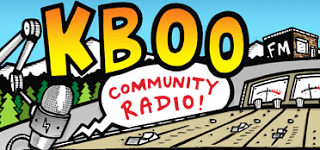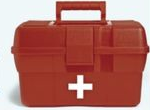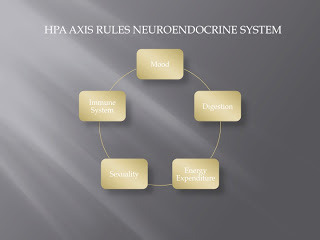Susan Pease Banitt's Blog, page 7
June 13, 2012
.goodreadsGiveawayWidget { color: #555; font-family...
.goodreadsGiveawayWidget { color: #555; font-family: georgia, serif; font-weight: normal; text-align: left; font-size: 14px; font-style: normal; background: white; } .goodreadsGiveawayWidget img { padding: 0 !important; margin: 0 !important; } .goodreadsGiveawayWidget a { padding: 0 !important; margin: 0; color: #660; text-decoration: none; } .goodreadsGiveawayWidget a:visted { color: #660; text-decoration: none; } .goodreadsGiveawayWidget a:hover { color: #660; text-decoration: underline !important; } .goodreadsGiveawayWidget p { margin: 0 0 .5em !important; padding: 0; } .goodreadsGiveawayWidgetEnterLink { display: block; width: 150px; margin: 10px auto 0 !important; padding: 0px 5px !important; text-align: center; line-height: 1.8em; color: #222; font-size: 14px; font-weight: bold; border: 1px solid #6A6454; -moz-border-radius: 5px; -webkit-border-radius: 5px; font-family:arial,verdana,helvetica,sans-serif; background-image:url(http://www.goodreads.com/images/layou... background-repeat: repeat-x; background-color:#BBB596; outline: 0; white-space: nowrap; } .goodreadsGiveawayWidgetEnterLink:hover { background-image:url(http://www.goodreads.com/images/layou... color: black; text-decoration: none; cursor: pointer; }
Goodreads Book Giveaway

The Trauma Tool Kit
by Susan Pease Banitt
Giveaway ends June 30, 2012.
See the giveaway details
at Goodreads.
Enter to win
Published on June 13, 2012 15:30
May 30, 2012
May 24, 2012
KBOO Interview on Recovery Zone

I was fortunate to have Stephanie Potter of KBOO's show Recovery Zone, in Portland, Oregon interview me yesterday about healing from stress and PTSD. The show is 30 minutes long and features three different callers with excellent questions. I had a blast doing it and am thankful for a chance to help people go deeper in their healing process. Click here, for a link to the downloadable interview.
Published on May 24, 2012 14:21
May 15, 2012
THURSDAY: Come join me for a *FREE* Manhattan event!
This coming Thursday night I will be giving a workshop and book reading/signing at Quest Bookshop in mid-town Manhattan. We will be exploring yogic healing from traumatic stress. Expect to laugh, explore, engage and add more tools to your healing tool kit! You can find more information if you click here.



Published on May 15, 2012 16:23
May 14, 2012
The HPA Axis, Trauma and You pt. 2

Maybe you have seen the discussion in the media lately around whether PTSD is a disorder or an injury. It is an injury.
Psychological trauma affects the entire body through the Hypothalamic-Pituitary-Adrenal (HPA) Axis. As we discussed before, (see The HPA Axis, Trauma and You), this axis governs the body's entire endocrine (hormonal) system. This is not in control of the victim, any more than bleeding and swelling is for the victim of a beating. PTSD always involves injury to the body's mechanisms. Always. This is one of the reasons the disorder is so painful and so hard to describe.
I have come to believe that all symptoms of PTSD are related to these disturbances or attempts to 'heal' the disturbances.
Let's take an extreme symptom, cutting or self-mutilation. We know in neurology that pain in one part of the body cancels out pain in another part of the body. This is a joke with my acupuncturist. Some times a painful needle will be inserted and he'll ask how my symptoms are. I'll answer, "fine, now that all I can feel is your painful needle!".
So, in a strange kind of way, cutting can be "adaptive" for forms of extreme trauma by managing through diversion and re-routing of pain signals, which then gives the victim a feeling of control.
Avoidance is another one of these symptoms. People with PTSD go to great lengths to avoid (or scare off, if it's a person) reminders of their trauma, sometimes resulting in strange "phobias" or behaviors. That saying, "you always hurt the one you love" goes twice for PTSD sufferers when their partners inadvertently trigger them. We need to learn when our PTSD injury is manifesting and make ourselves safe in ways that don't injure our relationships.
When medicine embraces the physiologic basis for PTSD, sufferers will finally gain the help that they need to heal from this profound HPA injury.
Published on May 14, 2012 10:33
May 7, 2012
Core Beliefs and PTSD

Last week my sweet kittie went missing. After a few very sad and anxious days, I realized that this event tapped into an outmoded deeply held belief that I did not realize I was holding. That belief is:
If I love something or someone too much, they will abandon or abuse me.
Sound familiar? It should. It is one of the most common beliefs of people raised in traumatic environments.
We all have core beliefs, about ourselves, about life, about love, about why we are suffering. These beliefs largely lay unconscious in our psyche, like a filter that colors everything we see. We don’t question these core beliefs because we do not know they are there!
People who live with PTSD have core beliefs that arise out of their traumas (and sometimes precede them). We do not choose these beliefs. In a sense they choose us. The purpose of mind, evolutionarily speaking, is to make sense out of a random set of stimuli, the environment we live in. Without mind, the world would be an inchoate mass of incoming information. Mind sorts, slots, and makes meaning of sensory input.
But it is also largely automatic and unconscious.
Our mind selects meaning similar to other messages we have been given by our families, our schools, our communities, our religions etc. Most of the time we are completely unaware of this process, just as you are unaware of your breathing right now. Think you’re aware? How many breaths have you taken in the last hour?
Right! Same with the mind. Our minds think and make meaning but we are largely unaware of the process.
So what does that mean for the person with PTSD? Well, traumatic stress ups the ante on thoughts. Our thoughts tend to be more highly charged, faster, more automatic and more intense when we are stressed. Sometimes they are helpful and help us survive. Other times not so much.
This thought that came to me: If I love something or someone too much, they will abandon or abuse me, it could have first arisen in my childhood, or maybe several lifetimes ago. But it has persisted, lurking in my mind like a malignant dustbunny. Once I became aware of the thought, I felt my body start to release. These thoughts, like shadows, melt away in the light of awareness. Do I still feel sad she is gone? Yes. But I no longer suffer from the underlying guilt and anxiety that went along with my unexamined core belief, which puts me in a much more functional position!
Now it’s your turn. What core beliefs do you have that may be holding you back from healing yourself?
Published on May 07, 2012 13:54
April 27, 2012
Five Ways to Heal your PTSD
1) Strengthen your "mind muscle" through meditation or mindfulness practice. Meditation is not "making your mind go blank"; it is focusing and calming the mind. The mind is like unruly horses, once you are in control, you can direct the mind where you want it to go. Otherwise it runs away with you (and often into flashbacks). This is the single most powerful aid to healing PTSD.
2) Eat whole, nutrient-rich and easily digestible foods. Our digestion suffers tremendously when we are stressed. PTSD is whole body event that depletes our energy and nutrients. Cut back on sugars, caffeine and alcohol that tax the body and especially your adrenals.
3) Find ways to safely tell your story, even if it is in a journal or through art. Finding your narrative and being heard are immensely healing.
4) Safely release held feelings. Crying is necessary, and sometimes so is shouting. Go fight with the ocean waves, run, hit a ball, or watch a sad movie. All are helpful. Holding intense feelings in becomes toxic over time. So release!
5) Learn to comfort yourself. You have been deeply wounded. It is OK to focus on yourself during this time of healing. Comfort is always healthy and never creates further problems. In other words drinking alcohol is not comforting but avoiding. True comfort involves activities like: being out in nature, taking a long hot bath, getting a foot massage, listening to your favorite music, redecorating your space etc. If you need to wrap up in a large blanket and stare off into space, that's OK. Balance comfort with necessary activity.
I feel for you and your suffering. I hope this helps!

2) Eat whole, nutrient-rich and easily digestible foods. Our digestion suffers tremendously when we are stressed. PTSD is whole body event that depletes our energy and nutrients. Cut back on sugars, caffeine and alcohol that tax the body and especially your adrenals.
3) Find ways to safely tell your story, even if it is in a journal or through art. Finding your narrative and being heard are immensely healing.
4) Safely release held feelings. Crying is necessary, and sometimes so is shouting. Go fight with the ocean waves, run, hit a ball, or watch a sad movie. All are helpful. Holding intense feelings in becomes toxic over time. So release!
5) Learn to comfort yourself. You have been deeply wounded. It is OK to focus on yourself during this time of healing. Comfort is always healthy and never creates further problems. In other words drinking alcohol is not comforting but avoiding. True comfort involves activities like: being out in nature, taking a long hot bath, getting a foot massage, listening to your favorite music, redecorating your space etc. If you need to wrap up in a large blanket and stare off into space, that's OK. Balance comfort with necessary activity.
I feel for you and your suffering. I hope this helps!

Published on April 27, 2012 13:28
April 24, 2012
The Trauma Tool Kit Has Arrived! *GIVEAWAY*
Hi all,
I'm happy to tell you that The Trauma Toolkit: Healing PTSD From the Inside Out is now in bookstores across the United States and is shipping from online booksellers. I had the privilege of finally holding my own copy this week. In celebration I am giving away three copies to the first three readers who link to this blog and comment below. Please be sure to send me your address privately if you see your name in the first three comments! Here's to healing from traumatic stress! Blessings, Sue
I'm happy to tell you that The Trauma Toolkit: Healing PTSD From the Inside Out is now in bookstores across the United States and is shipping from online booksellers. I had the privilege of finally holding my own copy this week. In celebration I am giving away three copies to the first three readers who link to this blog and comment below. Please be sure to send me your address privately if you see your name in the first three comments! Here's to healing from traumatic stress! Blessings, Sue
Published on April 24, 2012 09:18
April 16, 2012
TTK BREAKING NEWS
Hi all. Today I am pleased to tell you that one month out, the Search Inside function has been activated for The Trauma Tool Kit: Healing PTSD From the Inside Out. Quest Publishing has been quite generous with their sharing so you can begin reading now! Click on the book cover to the right of this post to go to Amazon's site for the book. My greatest desire is that this book help you overcome your traumatic stress and PTSD. Blessings, Sue
Published on April 16, 2012 10:42
April 6, 2012
Tool: Progressive Relaxation
My husband is a cardiologist. He and I have a friendly competition about who can get rid of chest pain faster. If there is nothing he can do he refers his patient to me or another practitioner. Progressive relaxation, twice a day, for 10 minutes a session usually takes care of unexplained angina in under 2 weeks.
If you have taken a yoga class or been in hypnosis or therapy chances are you know what progressive relaxation is. You start at your feet, imagining deep relaxation, warmth and heaviness and then slowly move that focus up the body. The exercise can take as little as 5 minutes or as long as 45 minutes. Sometimes people fall into a restful slumber. In fact progressive relaxation is excellent for insomnia!
I practice progressive relaxation every morning when I wake up. If you have stress in your life (and who doesn't?) you might be surprised at how much tension you are holding in your body coming out of the sleep and dream state. It resets my body and mind for the day ahead.
It is one of of the best tools for dealing with PTSD and traumatic stress. It is mental floss, which,like dental , is good to practice regularly one to two times/day. You can find videos and CD's that will talk you through progressive relaxation. Next time you are feeling stressed, give it a whirl (but not in your car!).
Have a wonderful holiday weekend!
If you have taken a yoga class or been in hypnosis or therapy chances are you know what progressive relaxation is. You start at your feet, imagining deep relaxation, warmth and heaviness and then slowly move that focus up the body. The exercise can take as little as 5 minutes or as long as 45 minutes. Sometimes people fall into a restful slumber. In fact progressive relaxation is excellent for insomnia!
I practice progressive relaxation every morning when I wake up. If you have stress in your life (and who doesn't?) you might be surprised at how much tension you are holding in your body coming out of the sleep and dream state. It resets my body and mind for the day ahead.
It is one of of the best tools for dealing with PTSD and traumatic stress. It is mental floss, which,like dental , is good to practice regularly one to two times/day. You can find videos and CD's that will talk you through progressive relaxation. Next time you are feeling stressed, give it a whirl (but not in your car!).
Have a wonderful holiday weekend!
Published on April 06, 2012 15:58



